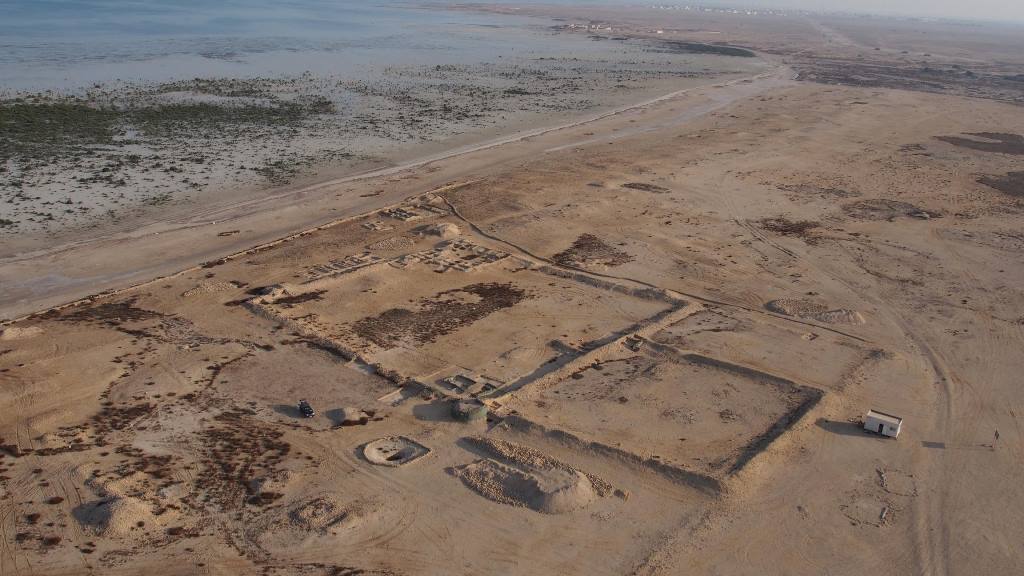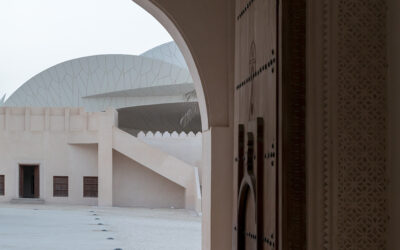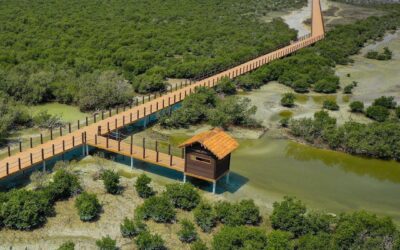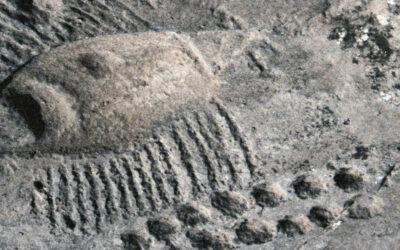One of the largest archaeological sites in Qatar Ruwayda stretches for more than 2.5km along the beach of a shallow bay. Very little is known about the site from historical sources, and the only two historical references both indicate that it had been abandoned by the end of the 18th century. The only source for understanding the origins, growth and eventual abandonment of the site comes from archaeological research. Excavations have revealed a large fortress, a palatial residence, two wells, several warehouses, a mosque, a ship repair shop, a walled tomb as well as remains of numerous temporary structures. The fortress was built in three phases, starting with a small square enclosure 25m per side with a single tower. The mosque next to the sea comprises a prayer hall divided into five bays. Their pillars were supported by stone piers. The remains of a huge round tower with a solid base that was built as an artillery platform are possibly related to a Portuguese fortification, which would be the first Portuguese building ever found Qatar.
Finds from the site indicate far-reaching trade contacts through porcelain cups from China, Japan and Myanmar (Burma), unglazed earthenware from Julfar (the United Arab Emirates) and Bahrain, glazed earthenware and stone paste fritware from Iran as well as ceramics from Europe. The rooms of the fortress were roofed with mangrove beams likely to have imported from Africa. Significant finds recovered from the site include a red granite mortar probably from Iran and a piece of bone carved in the form of an oryx.




